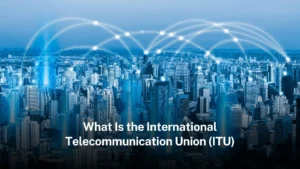In the vast and ever-evolving digital landscape, internet protocols play a critical role in making online communication possible. Whether you’re sending an email, loading a website, or streaming a video, internet protocols are at work behind the scenes to ensure information is transferred reliably, securely, and efficiently.
Table of Contents
ToggleBut what exactly are internet protocols, and why are they so essential to our digital lives? This article explores the basics, types, and significance of internet protocols in modern networking.
Definition of Internet Protocols
At their core, internet protocols are a set of rules or standards that govern how data is transmitted across networks. These protocols define how devices identify and communicate with each other using structured packet exchanges. Without these protocols, there would be no consistency in communication, and devices from different manufacturers or running different software would struggle to share information.
Internet protocols operate primarily within the framework of the TCP/IP model, which underpins the entire internet. These protocols ensure that data sent from one device reaches its destination in the correct format and without loss or corruption.
The Role of the TCP/IP Model
The Transmission Control Protocol/Internet Protocol (TCP/IP) model is the foundation of internet communications. It is a conceptual framework that guides how data is packaged, transmitted, routed, and received across networks.
The TCP/IP model consists of four key layers:
- Application Layer – This is where user-facing services such as email, web browsing, and file transfers operate. Protocols like HTTP, FTP, and SMTP function here.
- Transport Layer – Ensures reliable transmission of data using protocols such as TCP (Transmission Control Protocol) and UDP (User Datagram Protocol).
- Internet Layer – Handles the addressing and routing of packets using the Internet Protocol (IP).
- Network Access Layer – Deals with the physical and data link aspects of communication, including protocols like Ethernet and Wi-Fi.
Each layer of the TCP/IP model has specific protocols designed to handle its responsibilities. This layered approach allows for interoperability and flexibility across different types of networks and devices.
IP Addressing and Routing
A fundamental concept within internet protocols is IP addressing. Every device connected to a network has a unique IP address that identifies it for communication purposes. There are two main types of IP addresses:
- IPv4 (Internet Protocol version 4) – The original and most widely used format, featuring a 32-bit address space.
- IPv6 (Internet Protocol version 6) – Introduced to solve the exhaustion of IPv4 addresses, using a 128-bit format to support a vastly larger number of devices.
Routing refers to the process by which data packets find their way from the source to the destination IP address. Routers use routing tables and protocols such as OSPF (Open Shortest Path First) and BGP (Border Gateway Protocol) to determine the most efficient path.
Common Internet Protocols and Their Functions
Several standard protocols are essential to how the internet functions. Here are some of the most important ones:
1. HTTP/HTTPS – Web Protocols
Hypertext Transfer Protocol (HTTP) is used for transferring web pages and other resources from a server to a client (browser). Its secure version, HTTPS, encrypts the data using SSL/TLS, offering privacy and security—especially important for online transactions and data protection.
2. FTP – File Transfer Protocol
FTP (File Transfer Protocol) allows users to upload or download files to and from a server. It is commonly used for website management, data backups, and file sharing. While FTP is efficient, it is not secure by default, so SFTP (Secure FTP) is often used as a safer alternative.
3. SMTP, POP3, and IMAP – Email Protocols
- SMTP (Simple Mail Transfer Protocol) – Sends emails from a client to a server or between servers.
- POP3 (Post Office Protocol 3) – Downloads email from a server to a local device, usually deleting it from the server.
- IMAP (Internet Message Access Protocol) – Allows users to view and manage emails stored on a server without downloading them.
These protocols work together to handle the sending, retrieval, and storage of emails across devices and platforms.
4. DNS – Domain Name System
DNS (Domain Name System) acts as the internet’s phone book, translating human-friendly domain names (like www.example.com) into IP addresses that machines understand. Without DNS, users would have to remember complex IP addresses instead of simple URLs.
The Importance of Protocol Standards
Protocol standardisation ensures that all devices and software can communicate seamlessly, regardless of their manufacturer or origin. Organisations such as the Internet Engineering Task Force (IETF) and the Institute of Electrical and Electronics Engineers (IEEE) are responsible for developing and maintaining internet protocol standards.
Standardised protocols enable:
- Interoperability between systems
- Reliable data transmission
- Scalability of networks
- Simplified troubleshooting and support
By adhering to common protocols, networks and devices can coexist and evolve together, supporting everything from global communications to the Internet of Things (IoT).
Internet Security Protocols
As cyber threats have grown, so too has the need for robust internet security protocols. These protocols protect data integrity, confidentiality, and authenticity during transmission. Some key security protocols include:
1. SSL/TLS – Secure Socket Layer/Transport Layer Security
These protocols encrypt communications between browsers and servers, forming the basis of HTTPS. TLS is the modern, more secure version of SSL, and it’s vital for preventing man-in-the-middle attacks, data breaches, and eavesdropping.
2. IPSec – Internet Protocol Security
IPSec is a suite of protocols used to secure IP communications by authenticating and encrypting each IP packet. It’s commonly used in VPNs (Virtual Private Networks) to ensure secure remote access.
3. SSH – Secure Shell
SSH is a protocol for securely accessing and managing remote servers. It encrypts all traffic, preventing interception of sensitive data such as login credentials.
The Evolution of Internet Protocols
The internet has evolved dramatically since its early days, and so have the protocols that power it. For example:
- HTTP/3 is the latest version of HTTP, designed for speed and efficiency using the QUIC transport protocol.
- IPv6 adoption continues to grow as the world runs out of IPv4 addresses.
- New security standards are constantly being developed to combat emerging cyber threats.
This evolution reflects the increasing demands on the internet, including higher traffic volumes, more connected devices, and a greater need for security and performance.
Internet Protocols in Everyday Life
While often invisible to the average user, internet protocols are everywhere in modern life:
- Smartphones rely on protocols for calling, messaging, and browsing.
- Smart home devices like thermostats, cameras, and lights communicate over protocols such as MQTT or CoAP.
- Streaming services use protocols like RTP (Real-time Transport Protocol) to deliver smooth audio and video playback.
- Online gaming leverages UDP for fast, real-time responsiveness.
In short, internet protocols enable all digital communications, whether you’re chatting on social media or managing a smart fridge.
Challenges and Limitations
Despite their importance, internet protocols are not without challenges:
- Compatibility issues can arise between old and new protocols.
- Security vulnerabilities in outdated protocols can be exploited by cybercriminals.
- Latency and bandwidth constraints may affect protocol performance in high-traffic environments.
To address these issues, network administrators must ensure that systems are updated regularly and configured according to best practices.
Future of Internet Protocols
As technologies like 5G, edge computing, and quantum networking mature, the landscape of internet protocols will continue to evolve. We can expect:
- More adaptive and self-healing protocols for dynamic networks.
- Improved protocol efficiency for low-latency applications such as augmented reality and autonomous vehicles.
- Greater integration with AI to manage and optimise protocol performance in real time.
The future of the internet will depend heavily on how well protocols can support the next generation of devices and services.
Conclusion
Internet protocols are the silent enablers of the digital world. They provide the structure and rules that allow devices to communicate, ensuring data is transmitted securely, accurately, and efficiently. From simple browsing to complex network management, these protocols are fundamental to every online activity. As technology continues to evolve, so too will these protocols, adapting to meet the demands of an increasingly connected world.
Understanding internet protocols is not only essential for IT professionals but increasingly important for anyone using the internet. As we continue to embrace smart devices, cloud computing, and artificial intelligence, the role of protocols in maintaining seamless communication becomes even more critical. They are the language of the internet — and the key to its continued growth and reliability.
Ultimately, internet protocols serve as the foundation of the digital age. They power the infrastructure that connects people, systems, and information across the globe. As we look ahead, the continued development of innovative and secure protocols will be instrumental in shaping a more connected, intelligent, and secure future for everyone online.





Okay I like it it’s nice to see I never knew it’s all about trials
It’s okay and nice am happy to learn
Pingback: The Future of Internet Protocols in a 5G World - NRS.help
If some one needs to be updated with hottest technologies afterward he must be go to see this web page and be
up to date daily.
I’m really impressed together with your writing abilities as neatly as with the layout on your blog.
Is this a paid theme or did you modify it your self? Anyway stay up the nice quality writing, it is rare to see a great weblog like
this one nowadays..
Woah! I’m really enjoying the template/theme of this website.
It’s simple, yet effective. A lot of times it’s challenging to
get that “perfect balance” between superb usability and visual
appearance. I must say that you’ve done a excellent
job with this. Also, the blog loads very fast for me on Opera.
Excellent Blog!
Everyone loves it when individuals get together and share views.
Great website, keep it up!
This design is spectacular! You certainly
know how to keep a reader amused. Between your wit and your videos, I was
almost moved to start my own blog (well, almost…HaHa!)
Fantastic job. I really loved what you had
to say, and more than that, how you presented it. Too
cool!
I have been exploring for a little for any high quality articles or weblog posts in this kind of space .
Exploring in Yahoo I finally stumbled upon this web site. Reading
this information So i’m happy to convey that I have an incredibly good uncanny
feeling I found out just what I needed. I such a lot indubitably
will make sure to do not forget this website and give it a glance on a relentless basis.
Thanks for sharing such a nice opinion, piece of writing
is good, thats why i have read it completely
I was recommended this website by my cousin. I’m not sure whether this post is written by him as no one else know
such detailed about my trouble. You are wonderful! Thanks!
Hello! I’m at work browsing your blog from my new iphone!
Just wanted to say I love reading your blog and look forward to all your posts!
Keep up the great work!
There’s definately a lot to find out about this subject. I really like all of the points you made.
This paragraph offers clear idea in support of the new visitors of blogging, that really
how to do running a blog.
I used to be able to find good info from your blog
posts.
Your way of describing the whole thing in this article is
truly nice, every one be able to effortlessly understand it, Thanks a lot.
It’s very easy to find out any topic on net as compared to textbooks, as I found this
post at this web page.
May I simply just say what a comfort to discover a person that actually understands what they’re talking
about on the net. You certainly know how to bring
an issue to light and make it important. A lot more people need to look at this and understand this side
of the story. It’s surprising you’re not more popular because you definitely
possess the gift.
I have to thank you for the efforts you’ve put in writing
this blog. I am hoping to view the same high-grade blog posts from you in the future as well.
In truth, your creative writing abilities has encouraged me to get my own, personal site now 😉
continuously i used to read smaller articles or reviews that
as well clear their motive, and that is also happening
with this paragraph which I am reading at this time.
This is really interesting, You’re an overly professional blogger.
I’ve joined your feed and look ahead to in the hunt for extra of
your fantastic post. Additionally, I’ve shared your website
in my social networks
I pay a visit day-to-day some websites and sites to read posts, however this weblog offers quality based content.
Hi everyone, it’s my first visit at this site, and paragraph is actually fruitful in favor of me, keep up
posting these articles or reviews.
Hey There. I discovered your blog using msn. This is a really neatly written article.
I will be sure to bookmark it and come back to read extra of your
useful info. Thanks for the post. I’ll certainly return.
Thank you for some other fantastic post. The place else could anybody get that type of info in such a perfect approach of writing?
I have a presentation subsequent week, and I’m on the
look for such info.
Wonderful website. Plenty of helpful information here.
I’m sending it to a few friends ans also sharing in delicious.
And naturally, thank you for your effort!
Wow! After all I got a website from where I be able to in fact take valuable
data concerning my study and knowledge.
Superb post but I was wanting to know if you could write
a litte more on this subject? I’d be very grateful if you could elaborate a little bit further.
Appreciate it!
I believe this is among the such a lot significant info
for me. And i’m satisfied studying your article. But wanna observation on few normal issues,
The site style is perfect, the articles is truly nice : D.
Good task, cheers
Yes! Finally someone writes about OVERBOLA.
Appreciating the time and effort you put into your site and in depth information you present.
It’s good to come across a blog every once in a while that isn’t the same unwanted rehashed information.
Excellent read! I’ve bookmarked your site and I’m
adding your RSS feeds to my Google account.
Very energetic article, I enjoyed that bit. Will there be a part 2?
When someone writes an article he/she keeps the thought of a user in his/her mind that
how a user can know it. Thus that’s why this paragraph is outstdanding.
Thanks!
This page definitely has all of the information I needed about this
subject and didn’t know who to ask.
This post gives clear idea for the new viewers of blogging, that really how to do running a blog.
This article is in fact a pleasant one it assists new web people, who are
wishing for blogging.
Excellent, what a webpage it is! This webpage gives
useful facts to us, keep it up.
Hi there! Someone in my Myspace group shared this website with
us so I came to take a look. I’m definitely enjoying the
information. I’m book-marking and will be tweeting this to my followers!
Excellent blog and wonderful design.
After looking over a number of the articles on your
site, I truly like your technique of writing a blog.
I bookmarked it to my bookmark site list and will be checking back in the near future.
Please visit my website too and tell me how you feel.
Spot on with this write-up, I truly feel this site needs
a great deal more attention. I’ll probably be back again to read more, thanks for
the advice!
Piece of writing writing is also a excitement,
if you know afterward you can write otherwise it is complex to write.
Hi! Would you mind if I share your blog with my twitter group?
There’s a lot of folks that I think would really enjoy your
content. Please let me know. Many thanks
It’s amazing in support of me to have a web site, which is good for my
knowledge. thanks admin
I all the time used to study paragraph in news papers but
now as I am a user of internet so from now I am using
net for posts, thanks to web.
A motivating discussion is worth comment. There’s no doubt that that you
should publish more about this topic, it might not be a taboo subject but usually
people do not talk about such issues. To the next! Best wishes!!
I like what you guys tend to be up too. This kind of
clever work and reporting! Keep up the awesome works guys I’ve included you guys to my blogroll.
We’re a group of volunteers and starting a new scheme in our community.
Your web site provided us with valuable information to work on. You’ve done an impressive job
and our entire community will be thankful to you.
awesome
When some one searches for his required thing, so he/she desires to be available that
in detail, therefore that thing is maintained over here.
Spot on with this write-up, I really think this website needs far more attention. I’ll probably be
back again to read more, thanks for the info!
I am really impressed with your writing skills as well as with the layout
on your blog. Is this a paid theme or did you modify it yourself?
Either way keep up the excellent quality writing, it is rare to see a great blog like this one today.
I was able to find good information from your blog posts.
An impressive share! I have just forwarded this onto
a friend who was conducting a little research on this.
And he actually bought me breakfast due to the fact that I discovered
it for him… lol. So allow me to reword this….
Thanks for the meal!! But yeah, thanx for spending some time to
talk about this issue here on your web page.
Nicely written page. I honestly like the topic covered here. I’ll come back from time to time for more postings like this one.
Great article. It’s very unfortunate that over the last several years, the travel industry has had to fight terrorism, SARS, tsunamis, influenza, swine flu, and the first ever real global downturn. Through everthing the industry has proven to be strong, resilient and also dynamic, obtaining new strategies to deal with difficulty. There are often fresh complications and opportunity to which the sector must again adapt and behave.
Nicely written post. I honestly like the subject matter discussed here. I’ll check back every now and then for more postings like this one.
You can definitely see your expertise in the work you write. The world hopes for more passionate writers like you who are not afraid to say how they believe. Always go after your heart.
It is really a great and helpful piece of info. I am glad that you shared this useful information with us. Please keep us informed like this. Thanks for sharing.
Finally, something worth reading. It’s always nice to find postings like this one.
I have read several excellent stuff here. Certainly value bookmarking for revisiting. I wonder how a lot attempt you set to create one of these wonderful informative web site.
I can’t express how much I value the effort the author has put into creating this outstanding piece of content. The clarity of the writing, the depth of analysis, and the abundance of information offered are simply astonishing. Her zeal for the subject is obvious, and it has certainly struck a chord with me. Thank you, author, for providing your knowledge and enlightening our lives with this exceptional article!
Thanks, I have been looking for info about this topic for ages and yours is the best I have found so far.
Valuable information. Lucky me I discovered your web site by chance, and I am shocked why this accident did not happened in advance! I bookmarked it.
I was recommended this web site by my cousin. I am not sure whether this post is written by him as no one else know such detailed about my difficulty. You are amazing! Thanks!